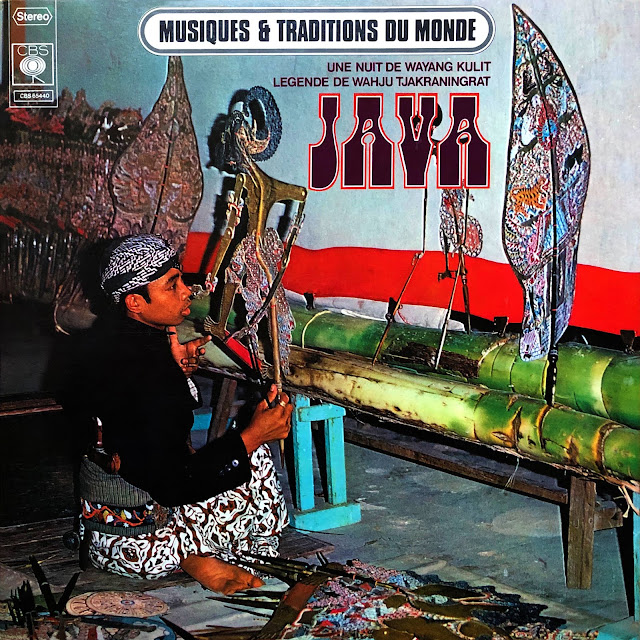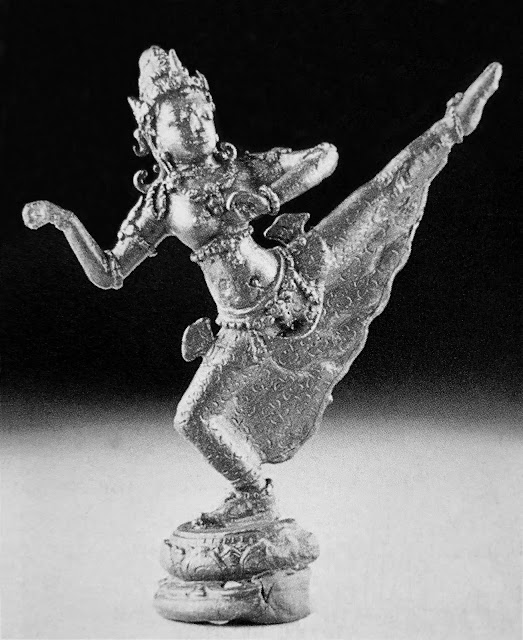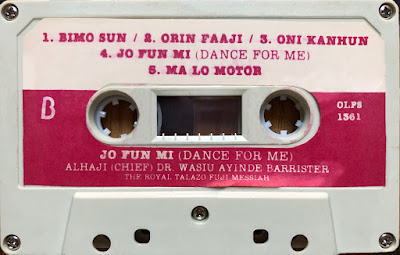Les Bushmen du Kalahari (The San People of the Kalahari) – no label, generic sleeve (7 in, 33 RPM)
The San (aka Bushmen) are a nomadic hunter-gatherer people who inhabit the semi-arid Kalahari Desert, mainly in Botswana and Namibia, were these undated recordings were presumably recorded. Some researchers believe that the San’s ancestors have lived in Southern Africa for more than 50,000 years.
The San live in small, egalitarian 20- to 60- person groups that govern by consensus rather than via a leader, for which sharing resources and collective ceremonies and rituals are paramount.
According to curator and
San rock art specialist Geoffrey Blundell, “Central to these rituals is
an invisible energy, said by the San to be found in almost all animals but in
great quantities in the eland [large antelope]. San shamans harness this
supernatural energy in order to undertake the dangerous journey to the world of
spirits, where they must perform various tasks such as rainmaking, fighting off
evil spirits, and curing the sick. (…) This [healing or trance] dance was, and
still is in the Kalahari, the central mechanism for harnessing the supernatural
power residing in eland and other animals. Often performed around the carcass
of a recently killed animal, the trance dance is circular in movement; men and
older women shamans dance in a circle, while young women sit, clap, and sing
songs (themselves thought to carry supernatural energy). The rhythmic singing
and clapping and the intense dancing for hours on end produce altered states of
consciousness in which the shamans experience, first, visual imagery, and
later, more complex multi-sensory hallucinations.”*
Les nomades chasseurs-cueilleurs San, également appelés Bochiman ou Bushmen, habitent le désert semi-aride du Kalahari, principalement au Botswana et en Namibie, où ces enregistrements non datés sont vraisemblablement enregistrés. Certains chercheurs pensent que les ancêtres des San vivent en Afrique australe depuis plus de 50 000 ans.
Les San vivent en
petits groupes égalitaires de 20 à 60 membres guidés par le consensus, plutôt
que par un chef, où le partage des ressources et les cérémonies et rituels
collectifs sont les valeurs cardinales.
Selon le conservateur et spécialiste de l'art rupestre San Geoffrey Blundell,
« Au coeur de ces rituels, les San captent l’énergie invisible présente dans
les animaux, tout particulièrement l'éland. Les chamans San canalisent cette
énergie surnaturelle pour entreprendre de périlleux voyages dans le monde invisible, où ils accomplissent diverses missions, comme l’appel de la pluie, la
lutte contre les esprits maléfiques et la guérison des malades. (…) Dans le
Kalahari, cette danse [de guérison ou de transe] est le mécanisme central par
lequel le pouvoir surnaturel des élans et des autres animaux est utilisé.
Souvent exécutée autour d'une carcasse d'animal, la danse de
transe dessine un mouvement circulaire; les hommes et les femmes chamans d’un
certain âge dansent en cercle, tandis que les jeunes femmes assises applaudissent et chantent des chansons (elles-mêmes considérées comme porteuses
d'énergie magique). Au bout de plusieurs heures, le chant et les applaudissements rythmiques, ainsi que la danse effrénée produisent des états de conscience altérés
au cours desquels les chamans reçoivent des visions, suivies d’hallucinations
multisensorielles plus complexes. »*
Ce disque de musiques inspirées, imprégnées de sérénité et d’une aura surnaturelle, présente du chant
et du piano à pouce dongu (A1), un
arc musical avec la bouche faisant office de résonateur (A2), un instrument à archet
avec des sonorités déroutantes (A3), un solo de xylophone (B1), et un morceau superbe avec deux voix et un xylophone (B2).
*Geoffrey
Blundell. “San Ethnography.” In Heilbrunn
Timeline of Art History. New York: The Metropolitan Museum of Art, 2000.https://www.metmuseum.org/toah/hd/san/hd_san.htm
Photographs of Kalahari San by L.K. Marshall (c. 1950-1955) are from Encyclopaedia
Universalis France, 1988:
Universalis France, 1988:
Young woman playing the gauka (above)
Ancestral method for starting a fire (below)





















